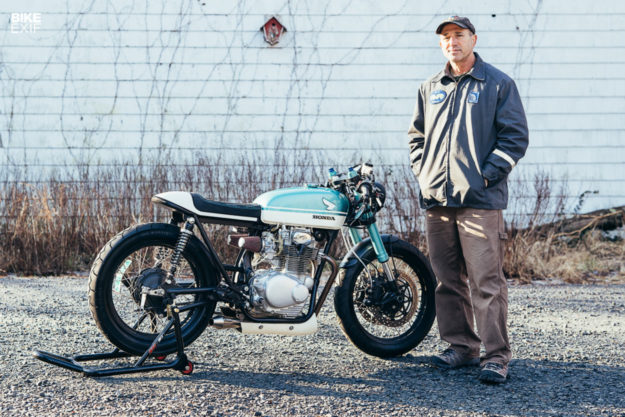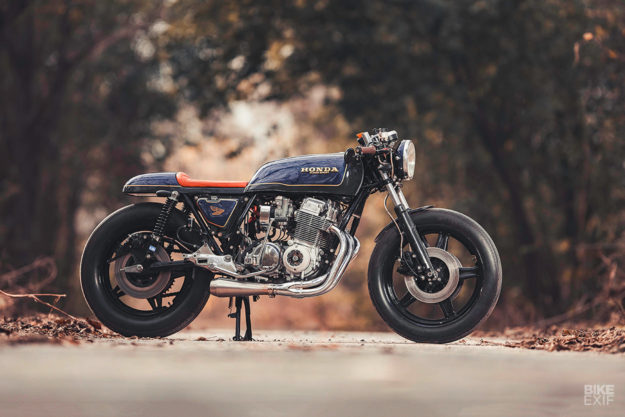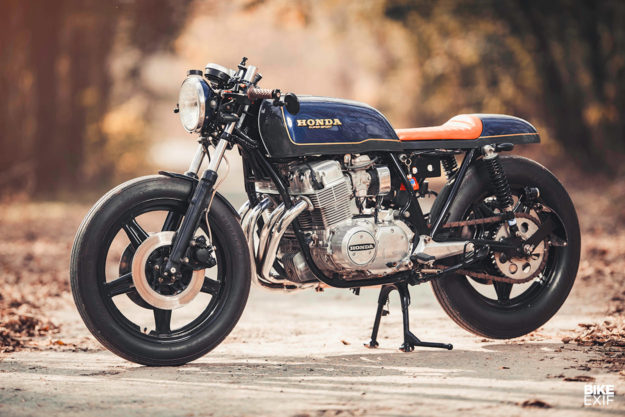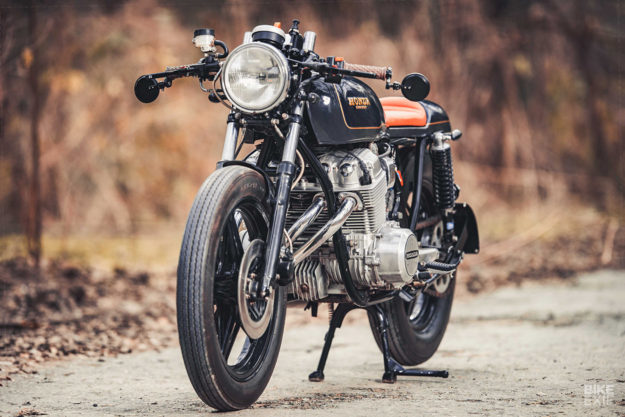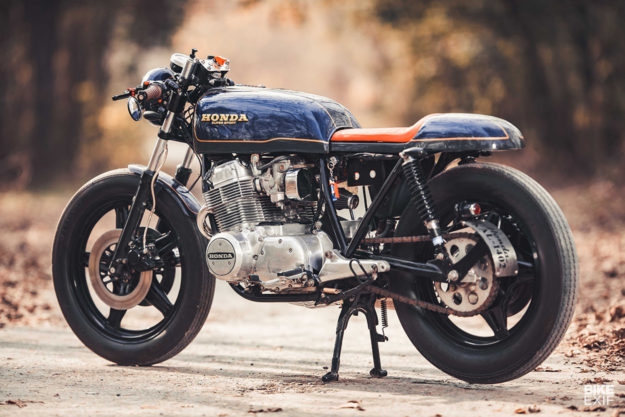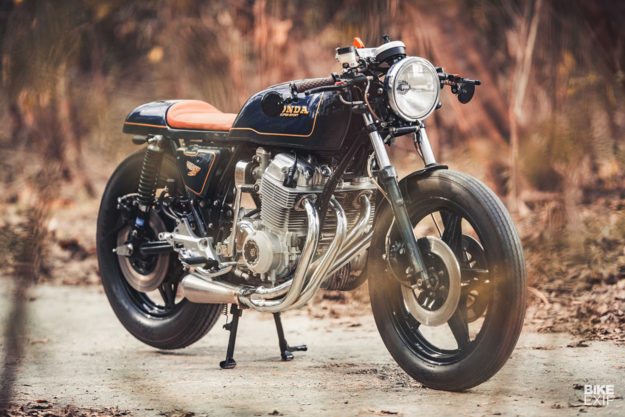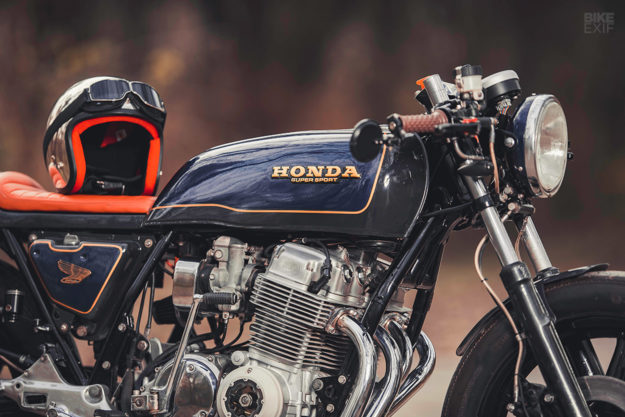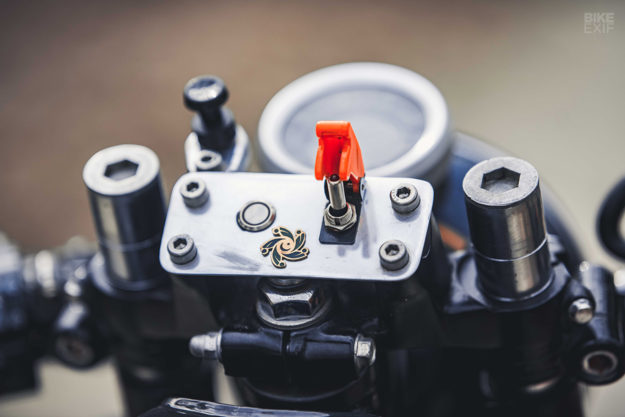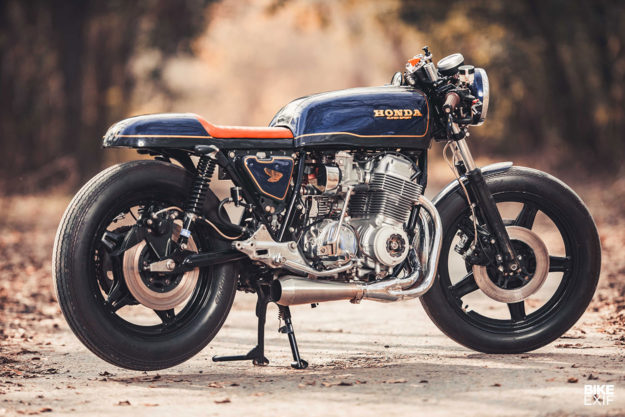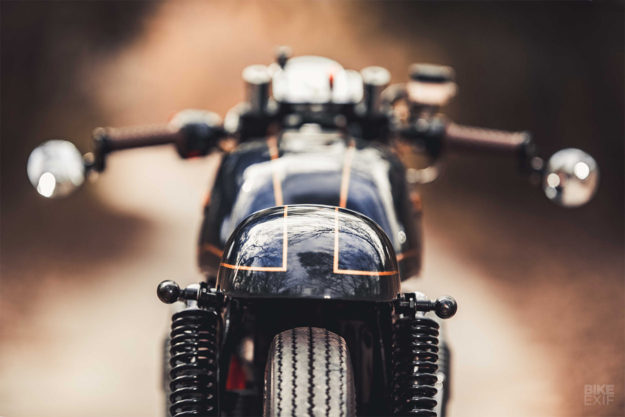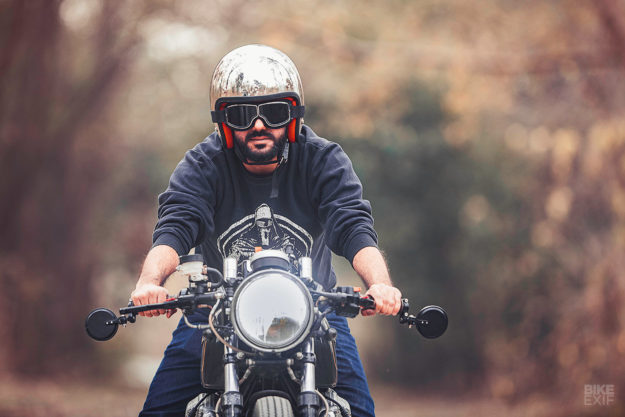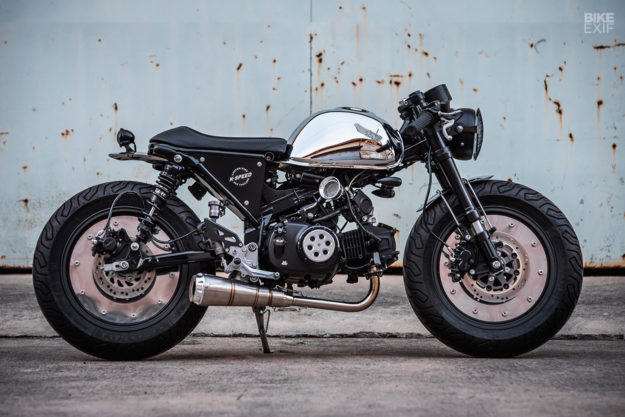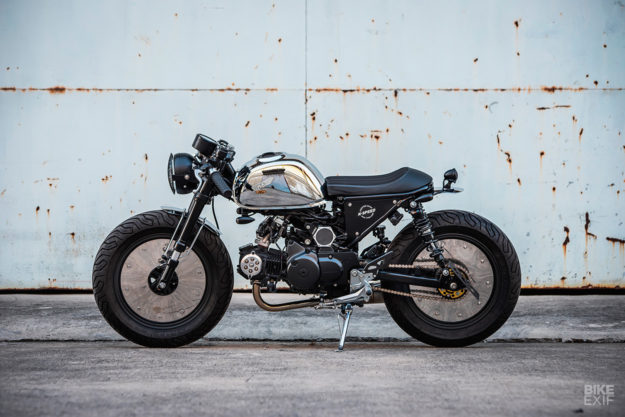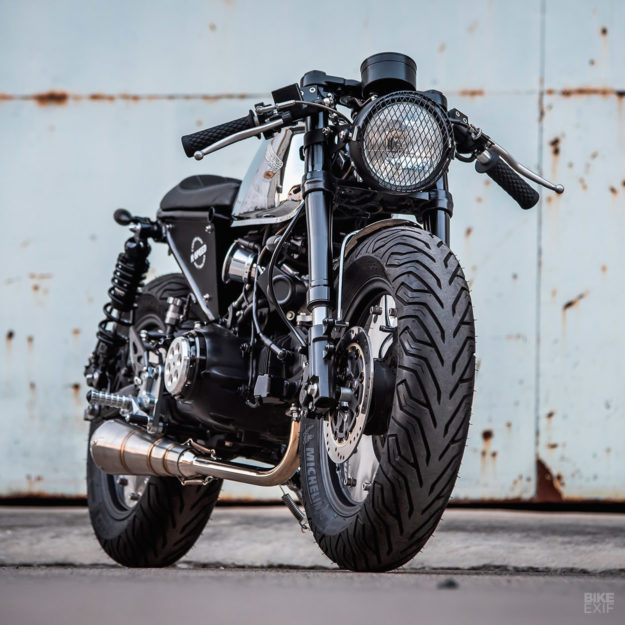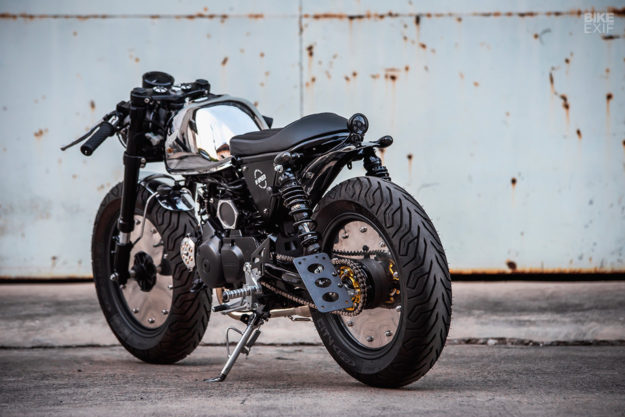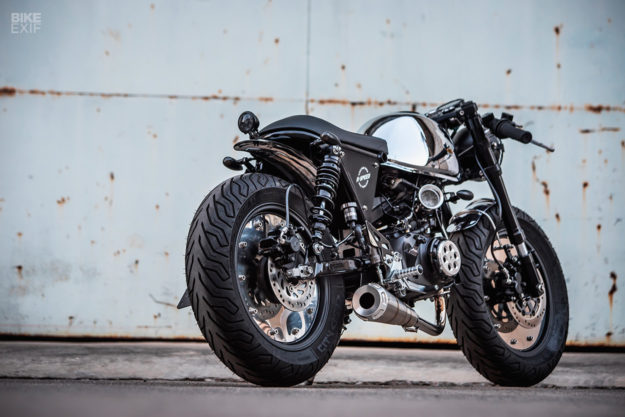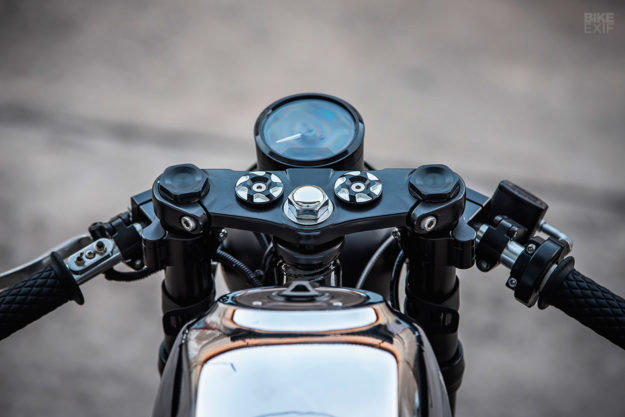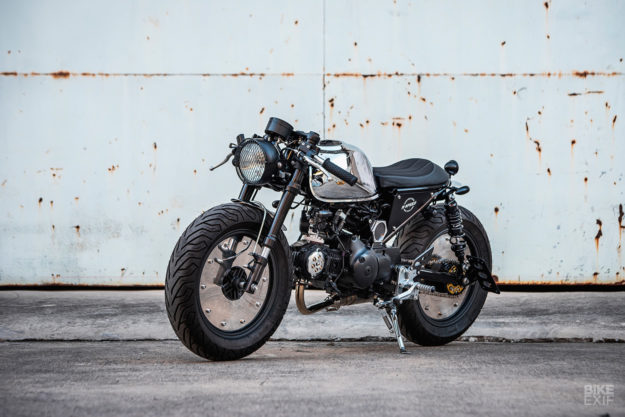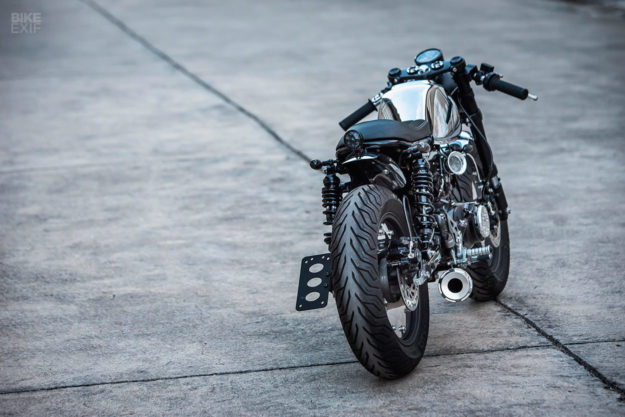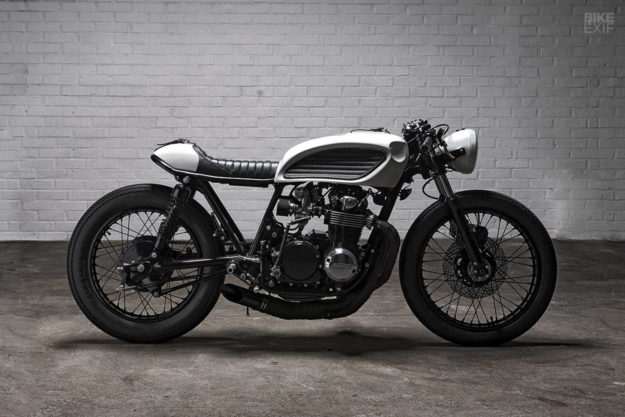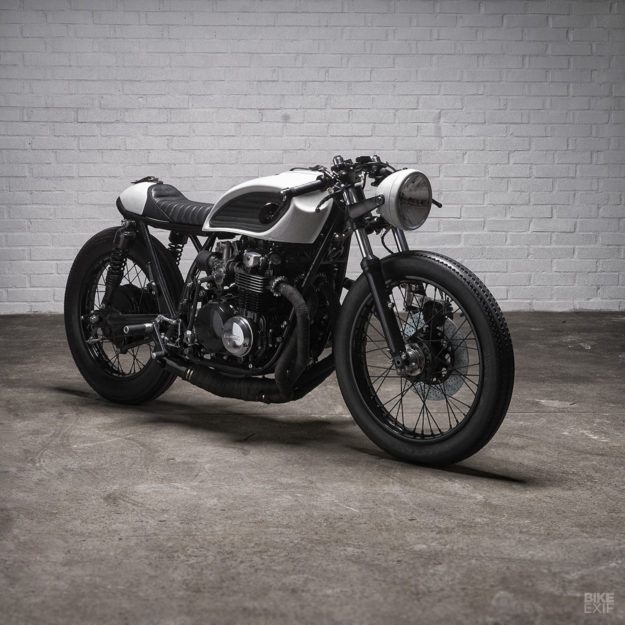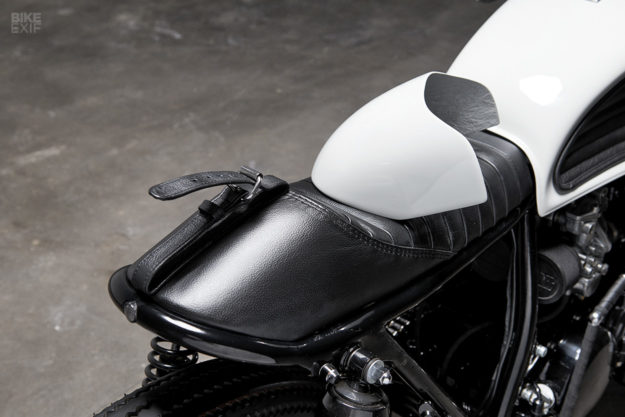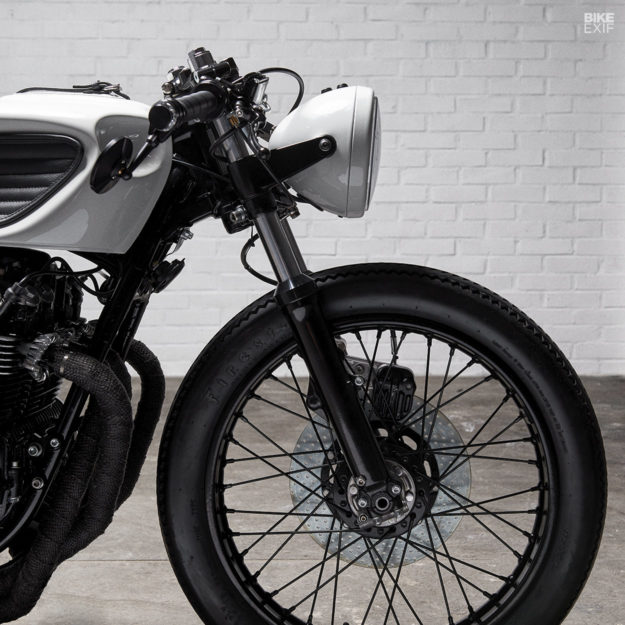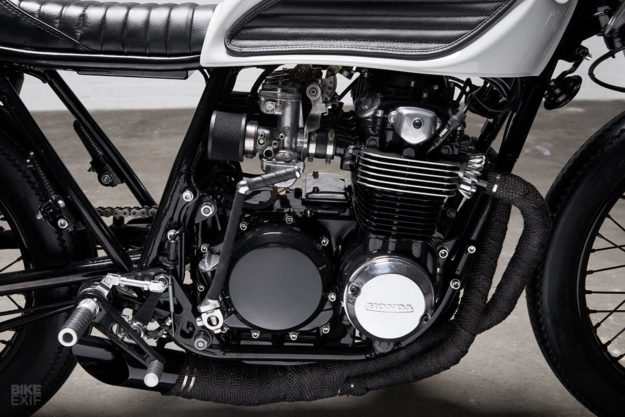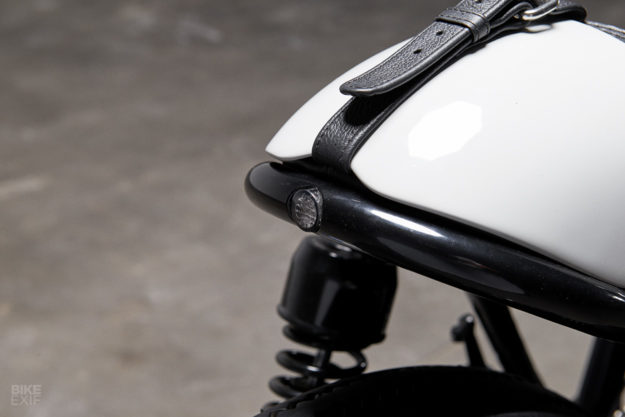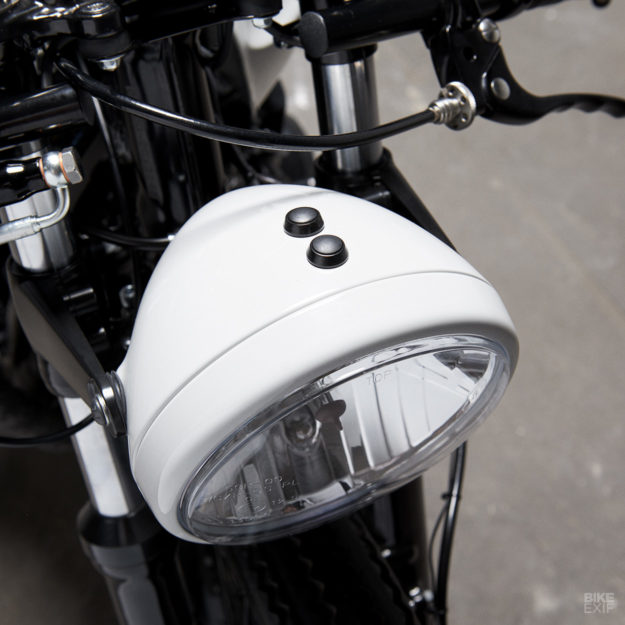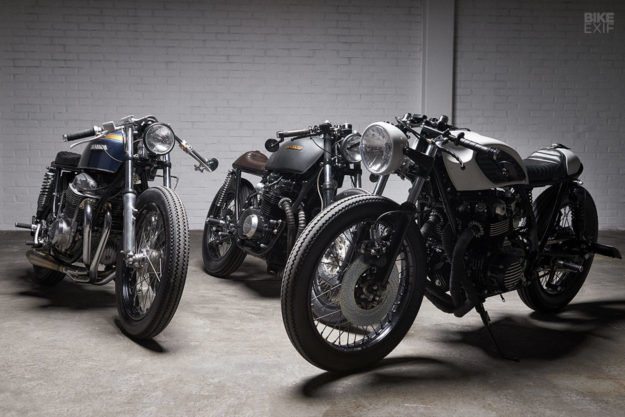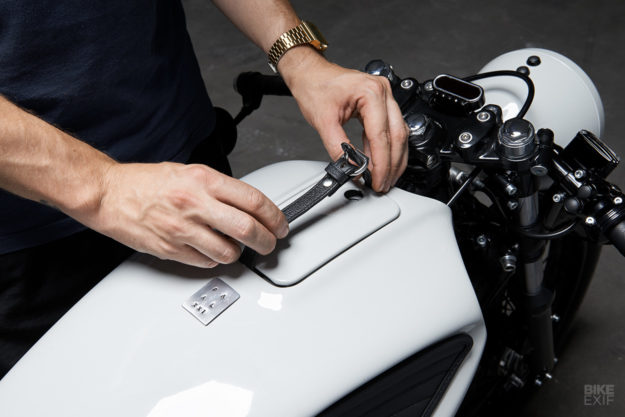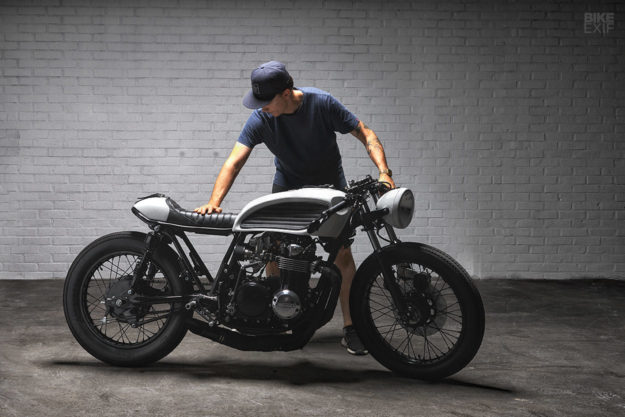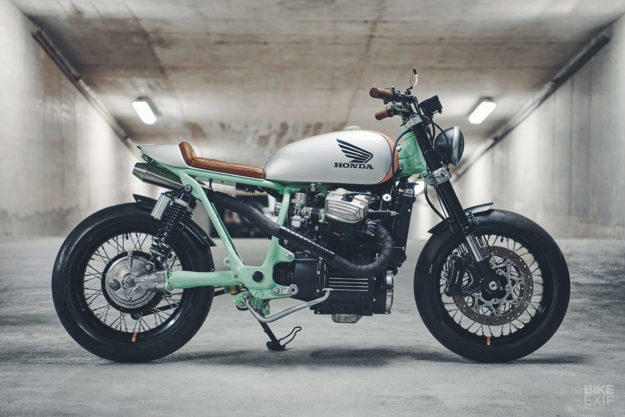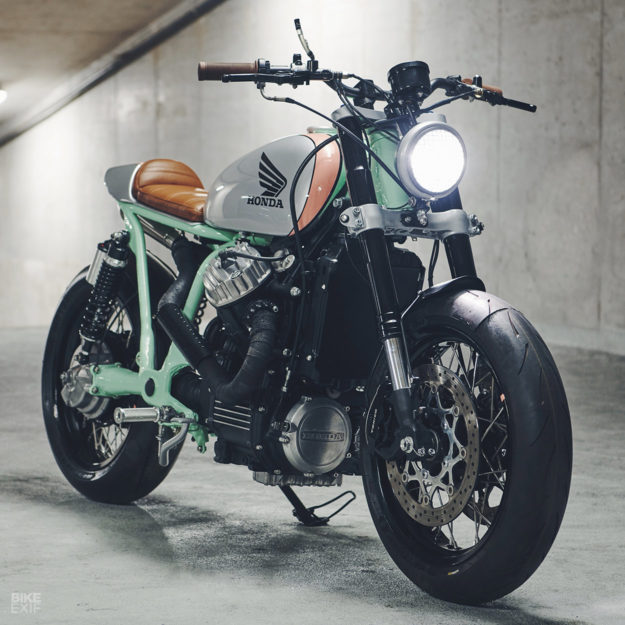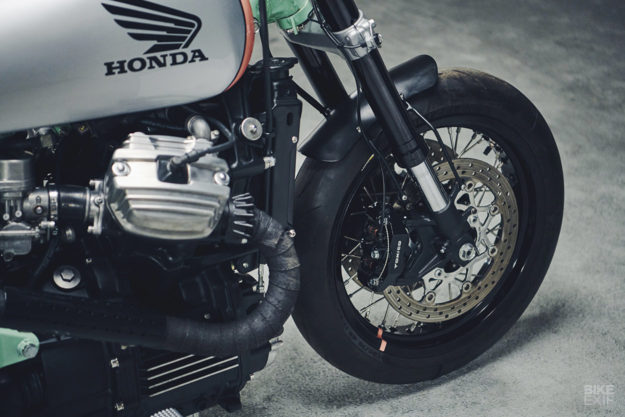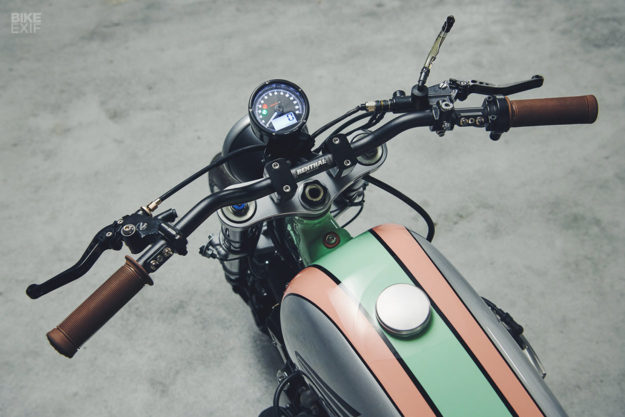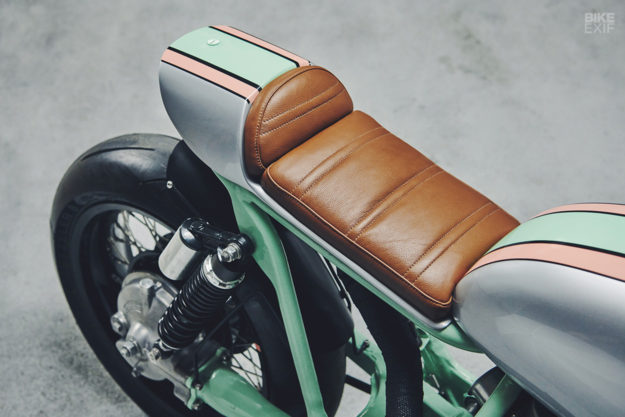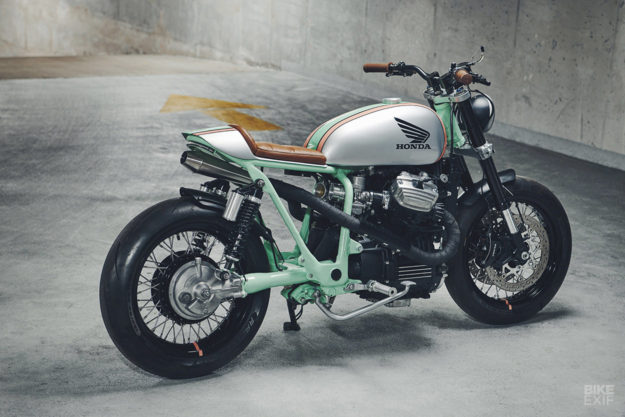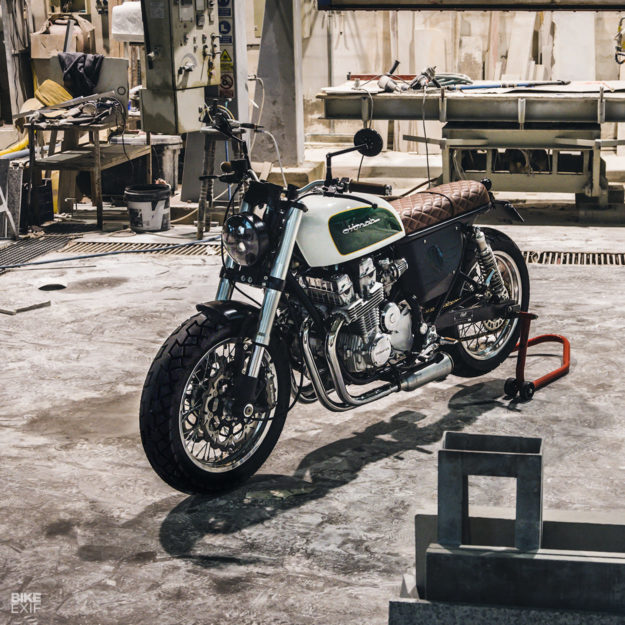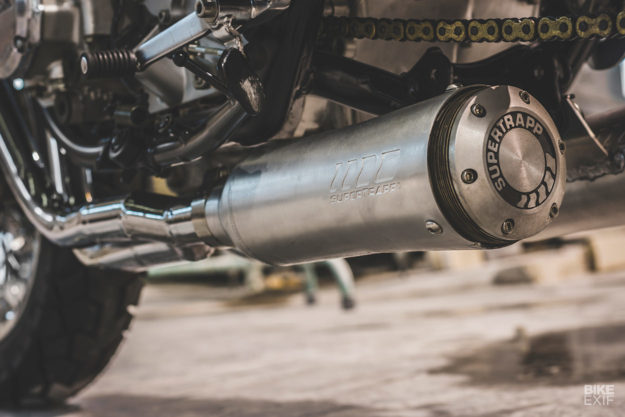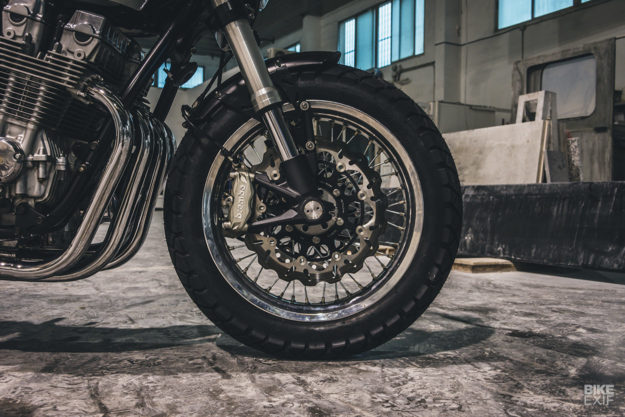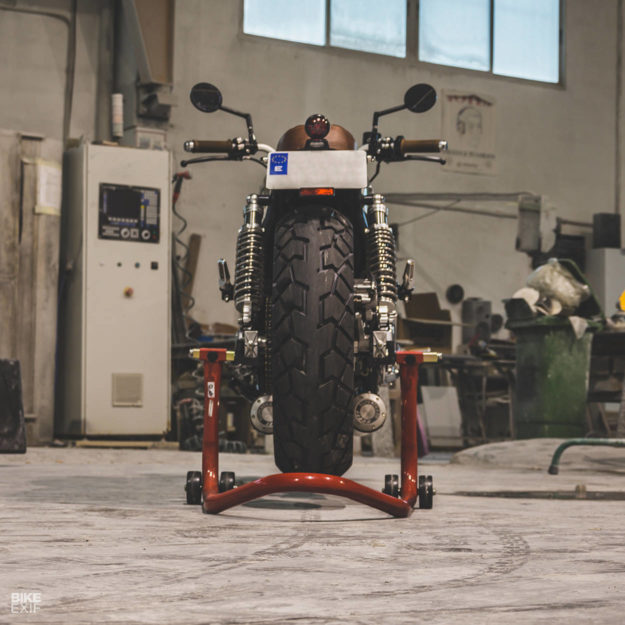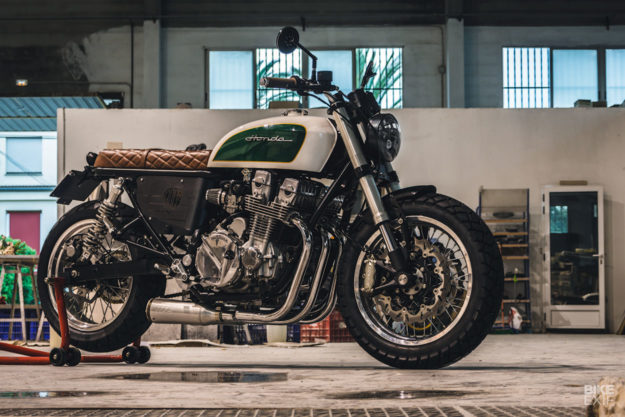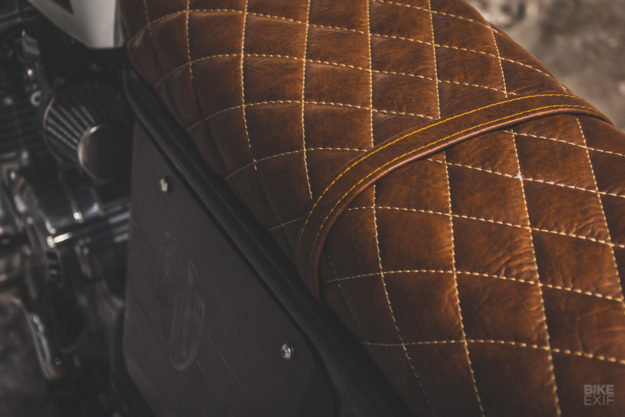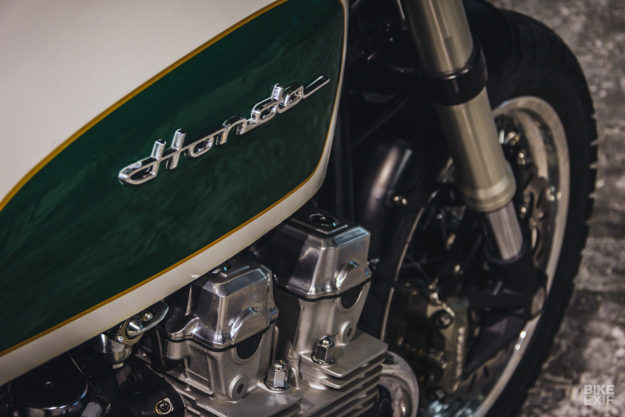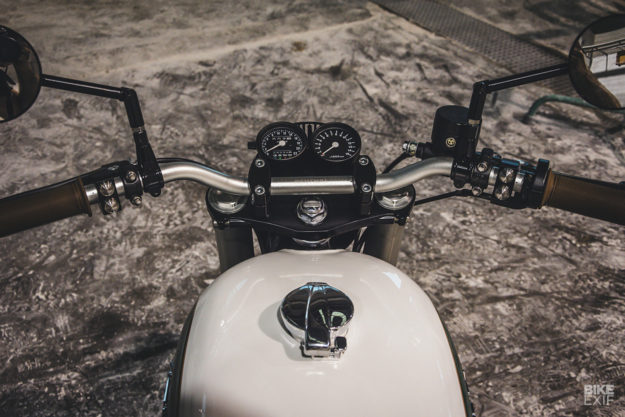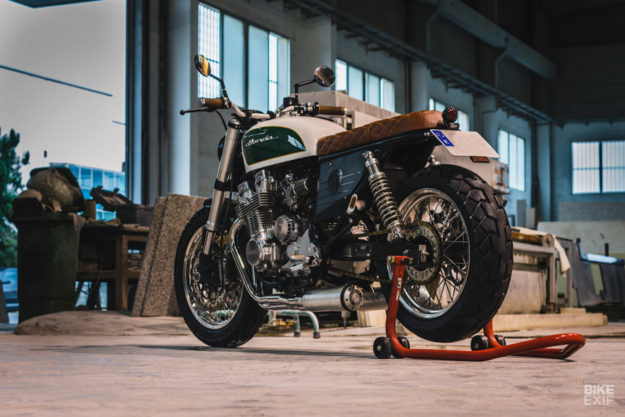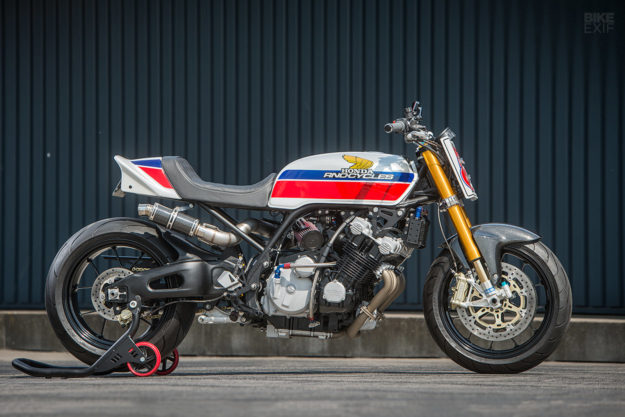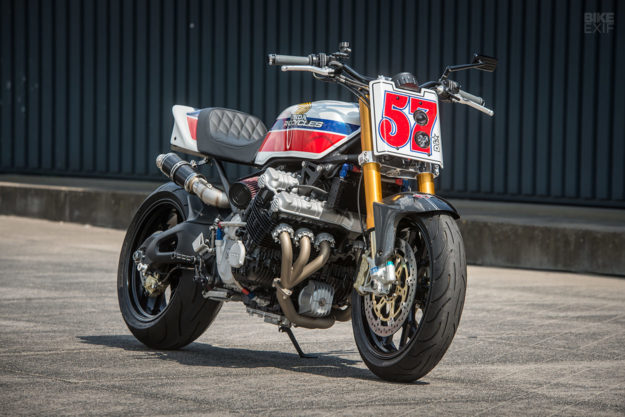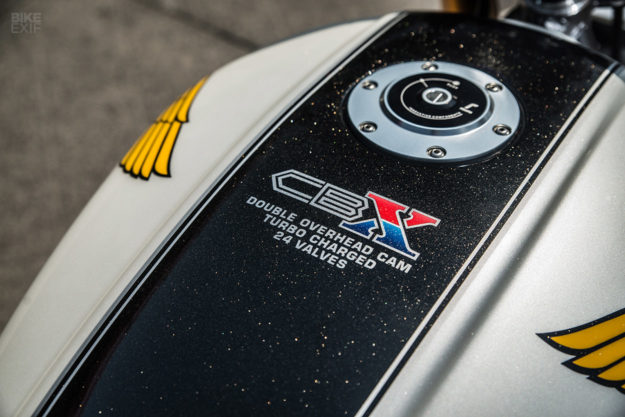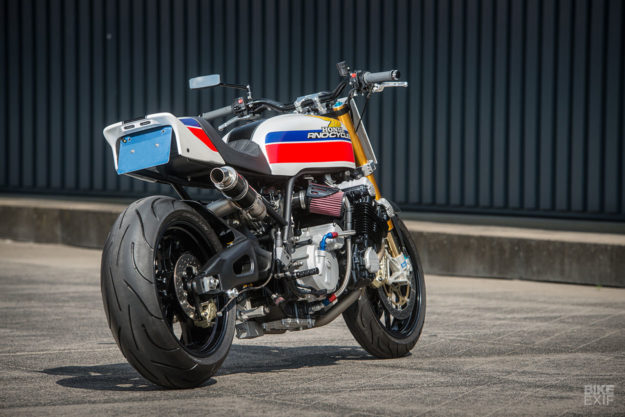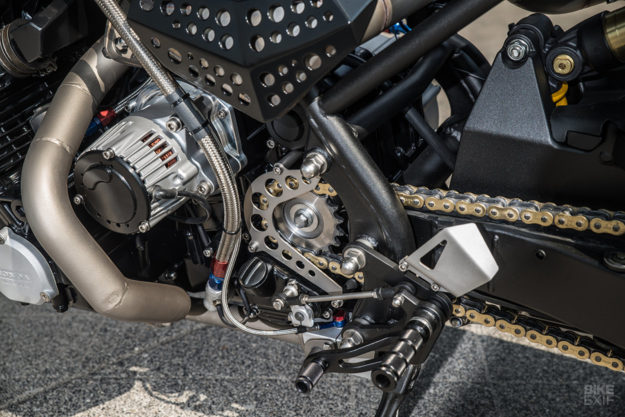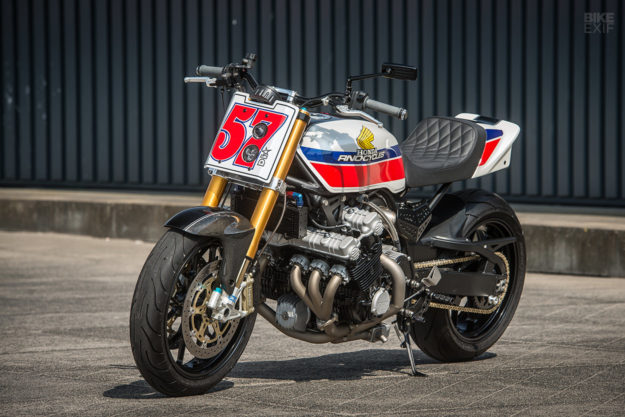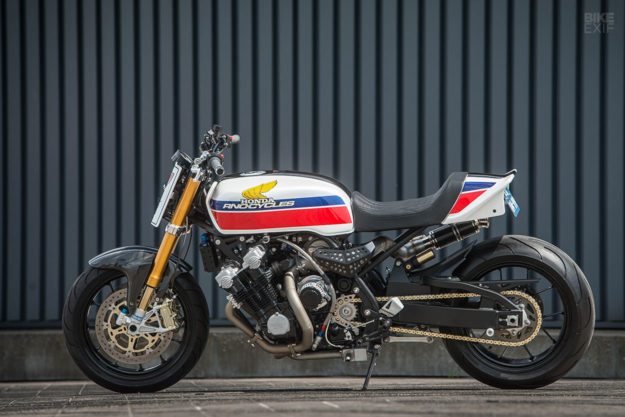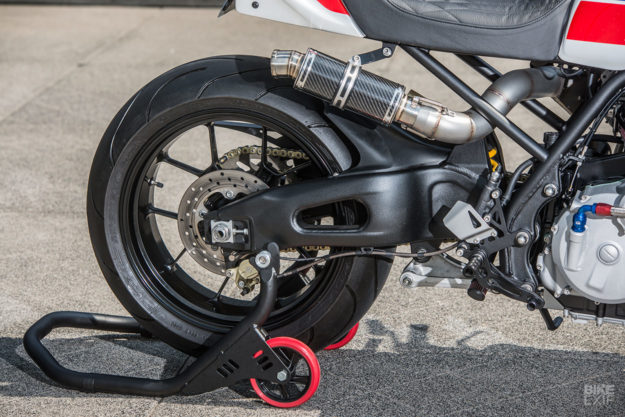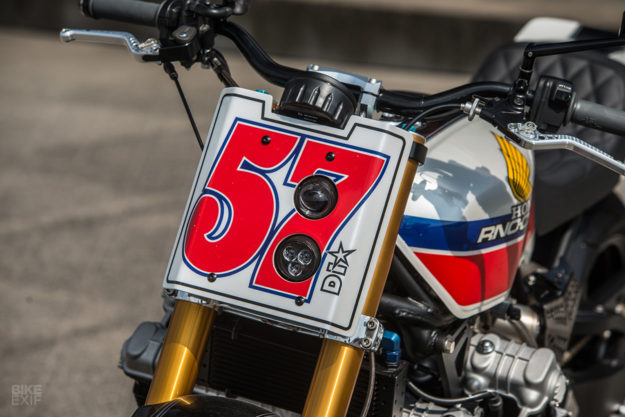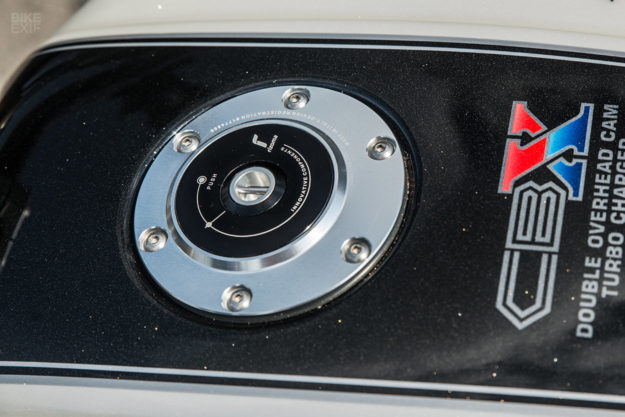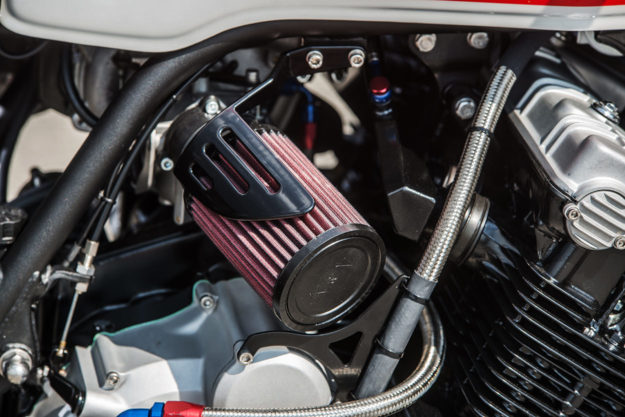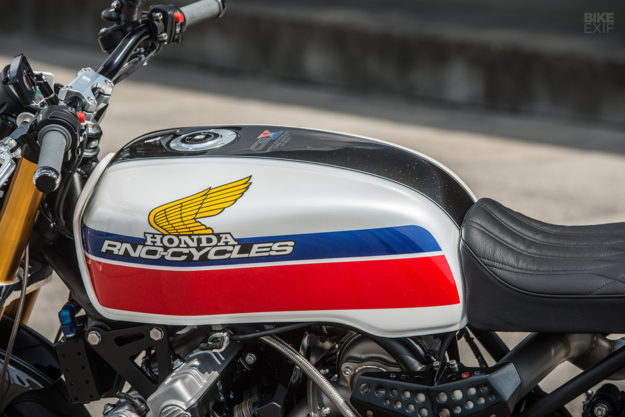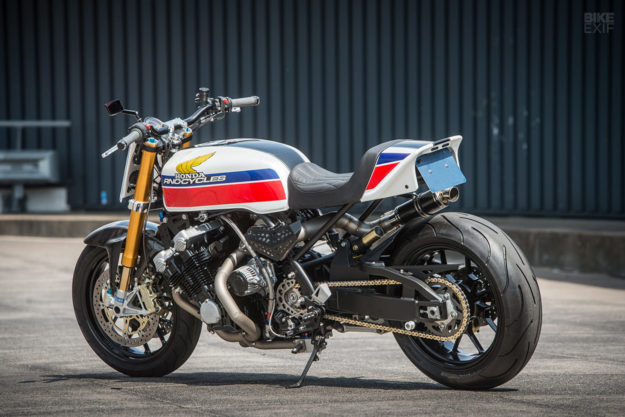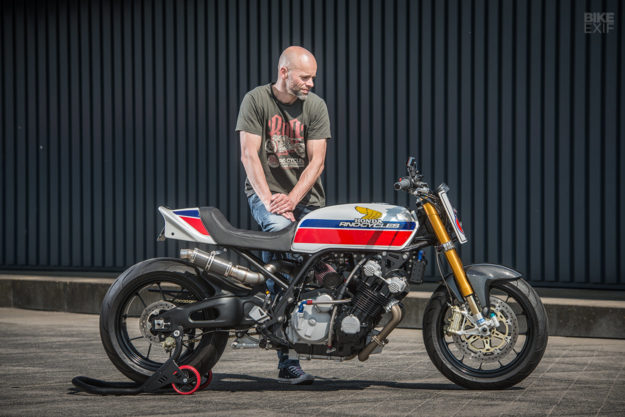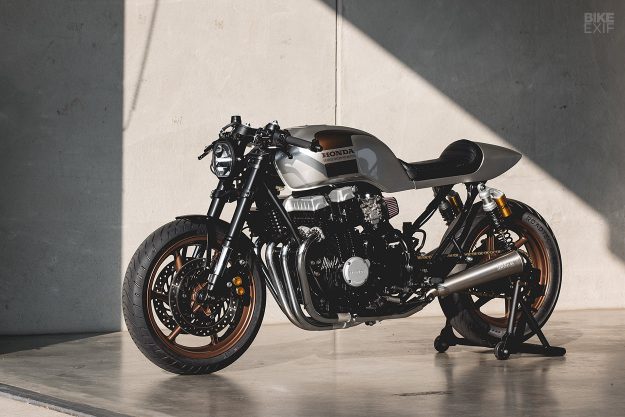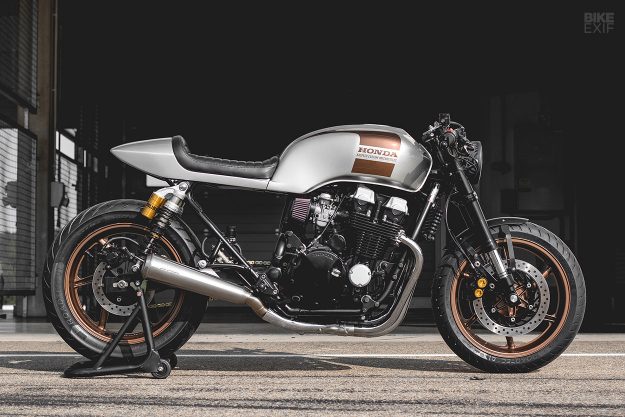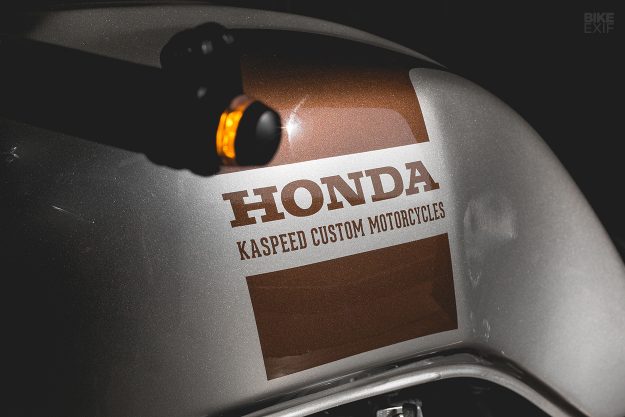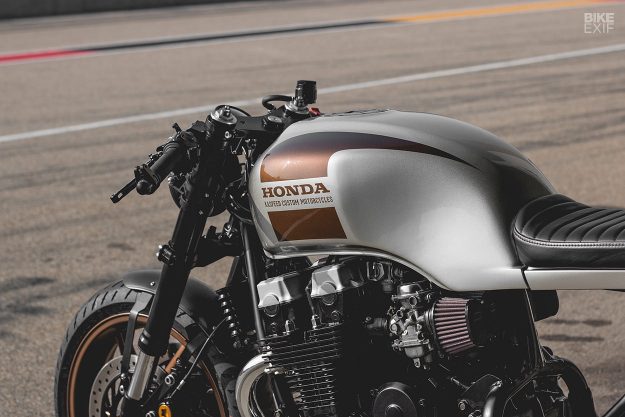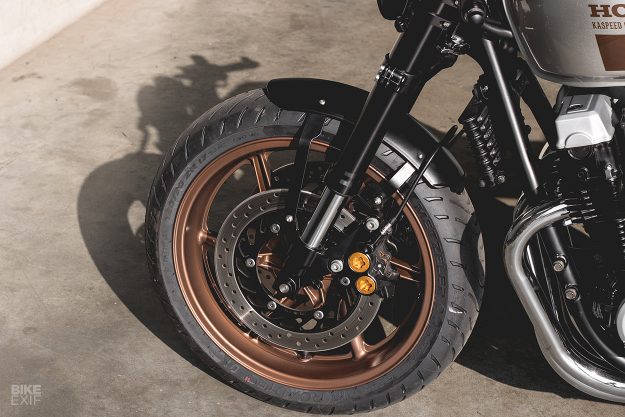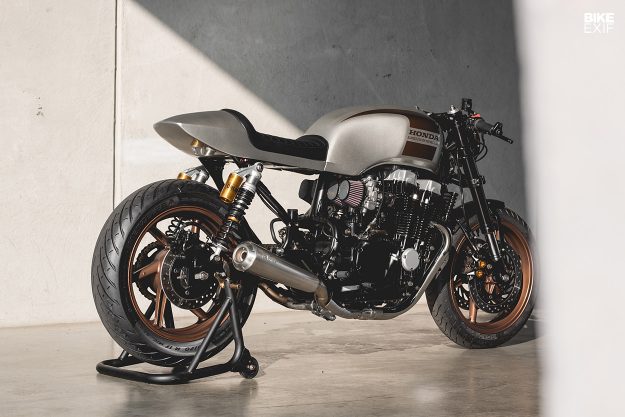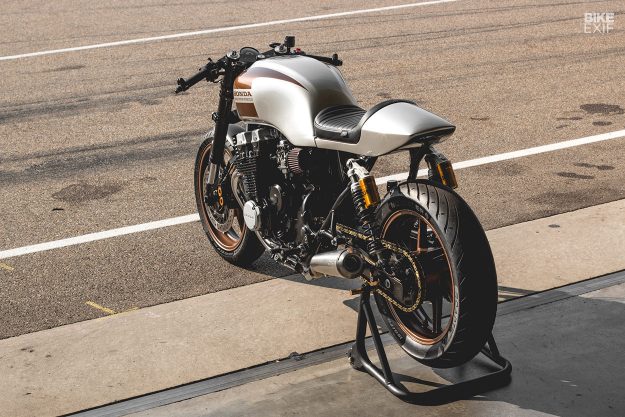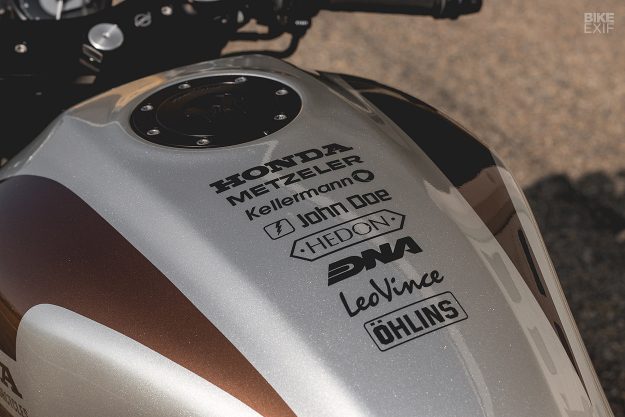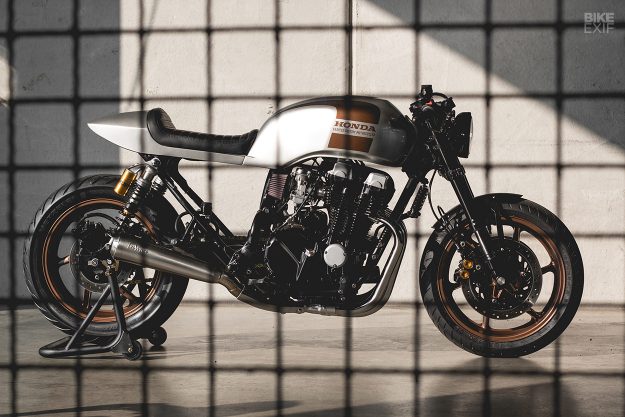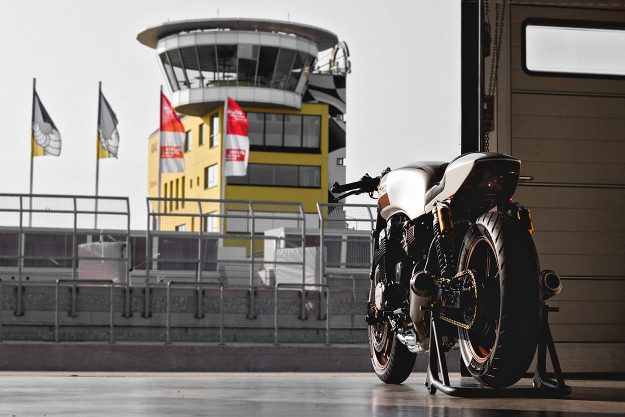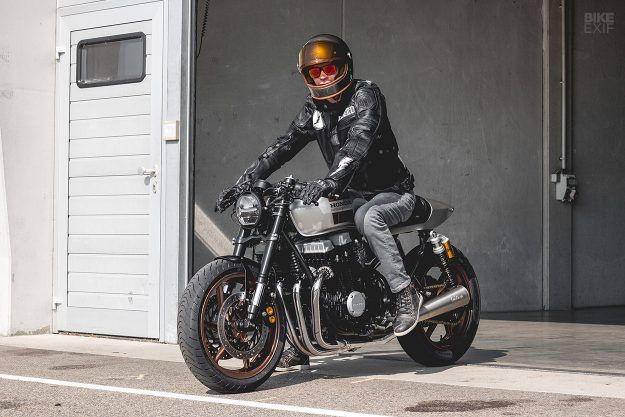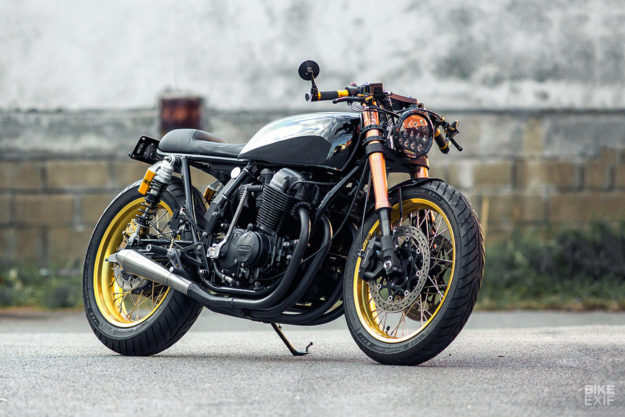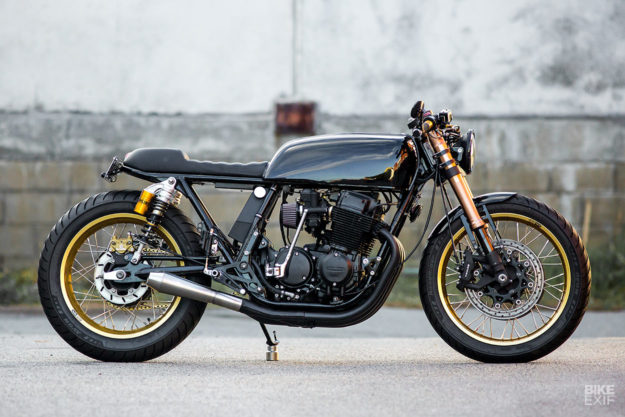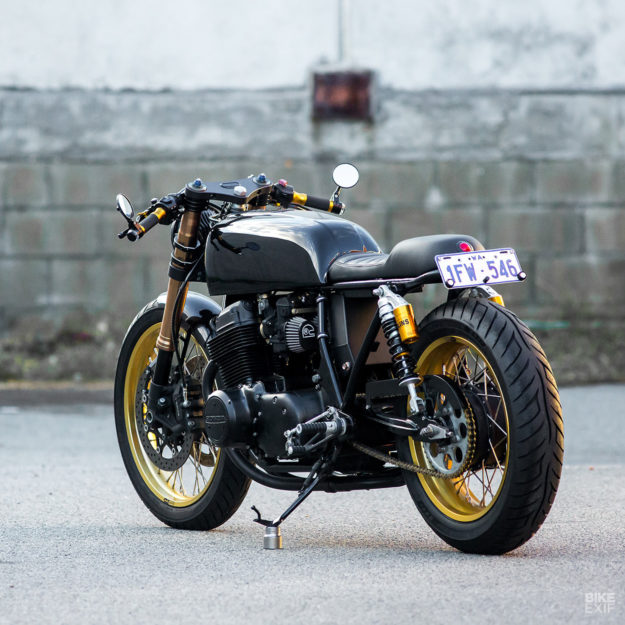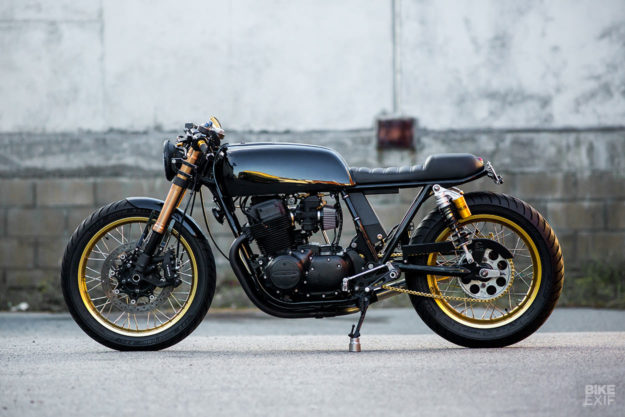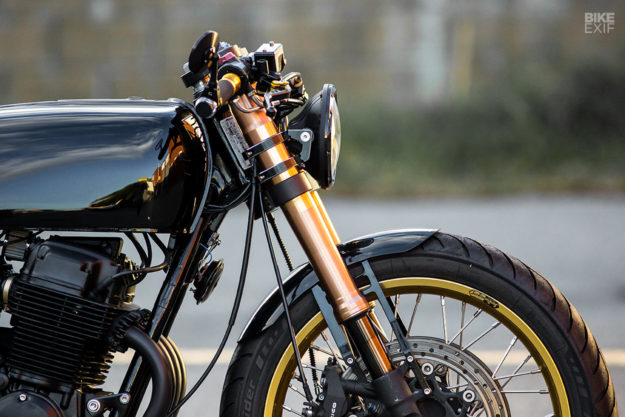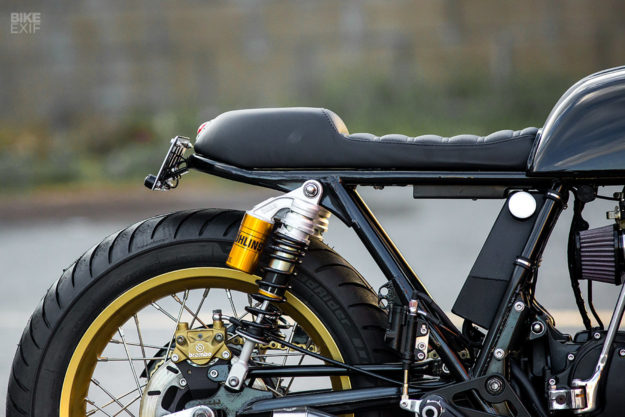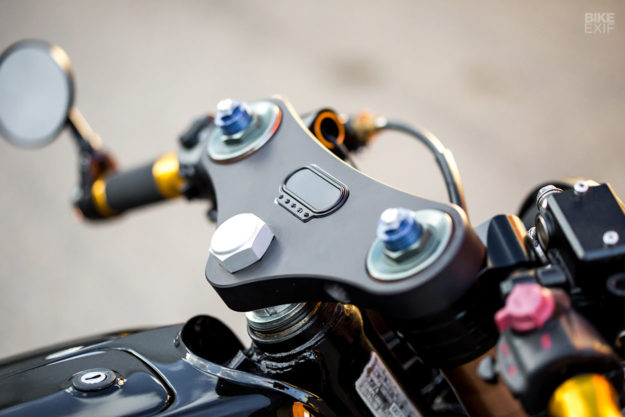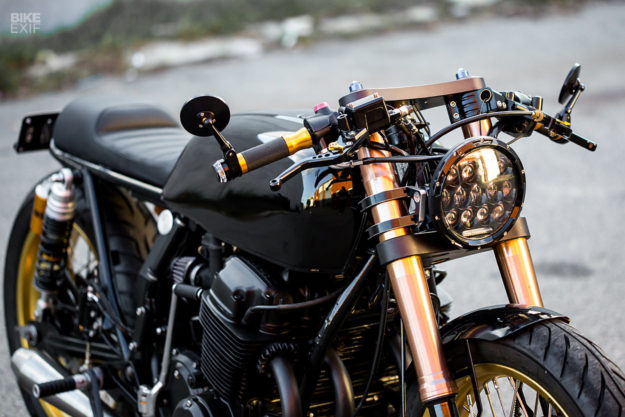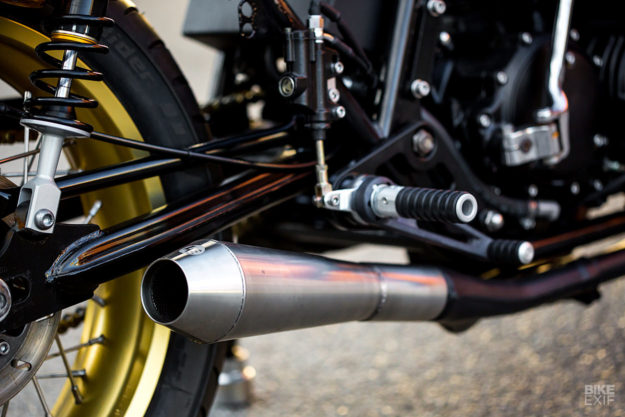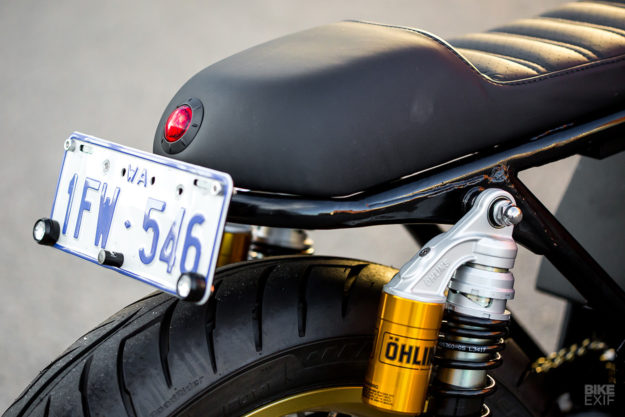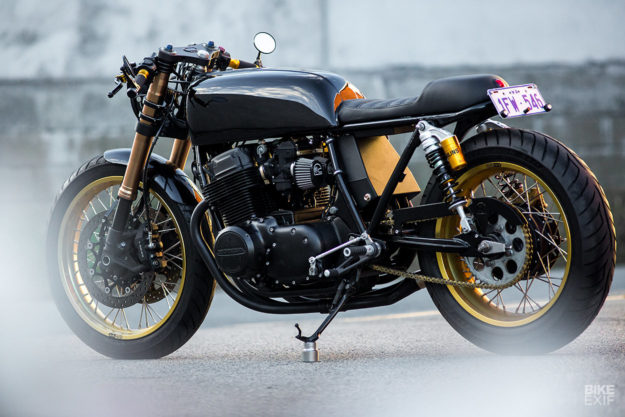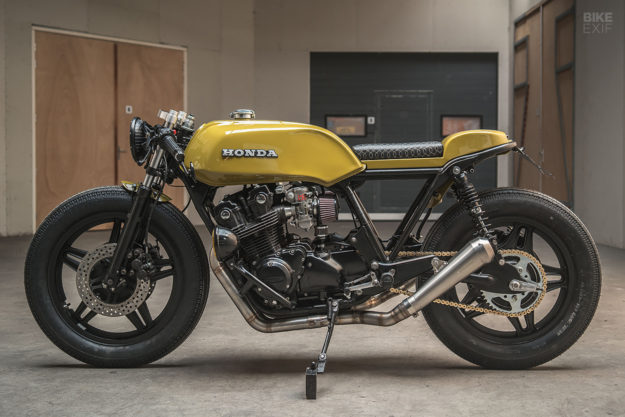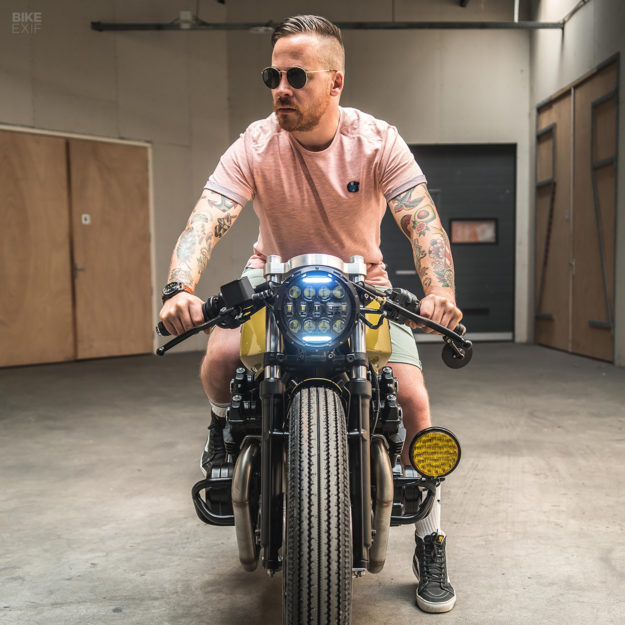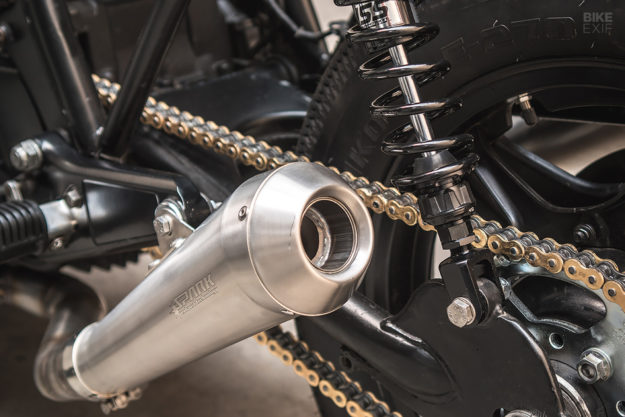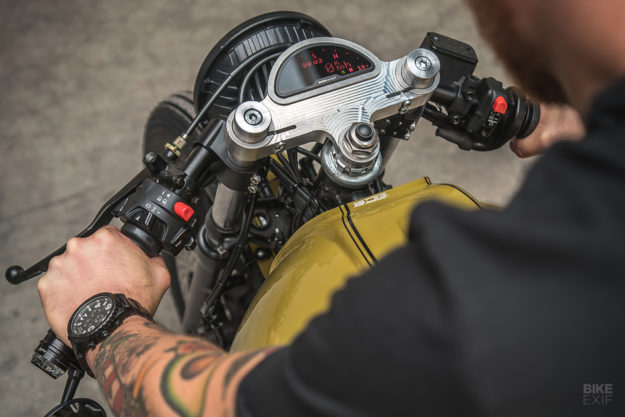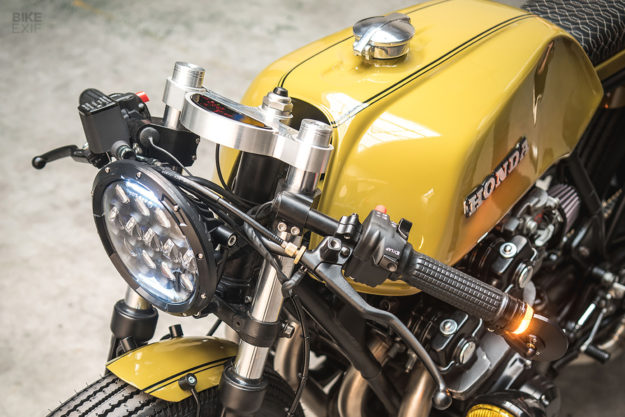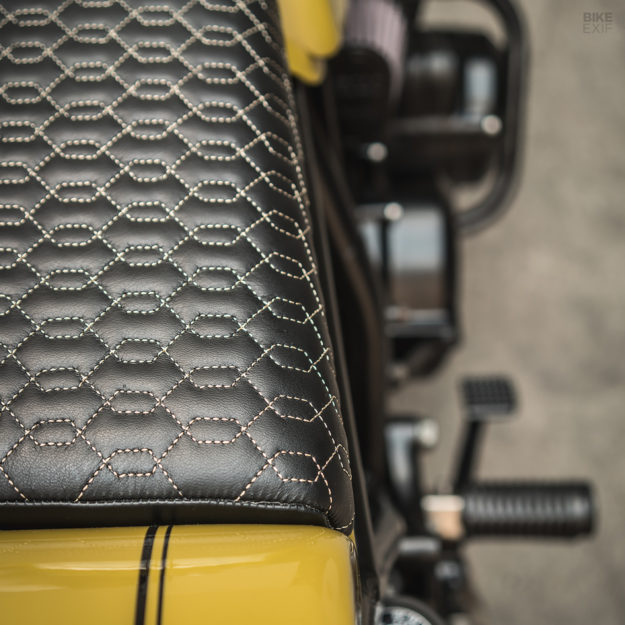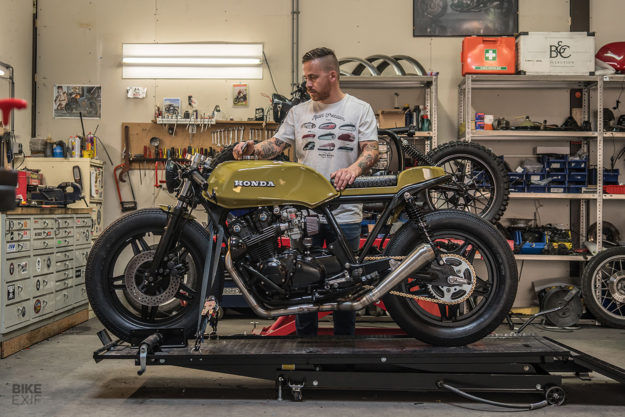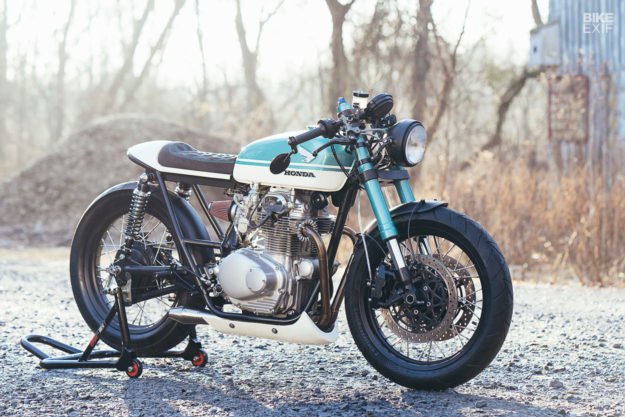
It’s quite rare for a CB cafe racer to land in the Bike EXIF inbox these days. And we politely turn down most that do.
But this CB350 from New Jersey went straight to the top of the pile: it’s an absolutely state of the art restomod, and so beautifully finished we’d almost be scared to ride it.
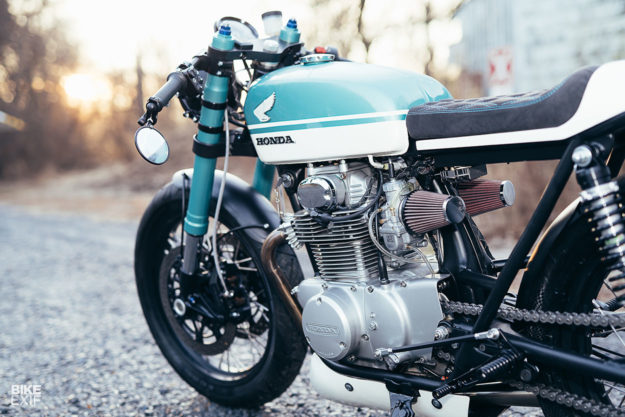
It comes from Merlin Cycleworks, which is run by 56-year-old Mark Kouri. Mark’s been an aircraft mechanic for over 30 years—repairing jets for United Airlines—and you can see his attention to detail in this amazing build.
When he’s not repairing or replacing jet engines or fixing autopilots, he builds customs in his two-car garage at home. “I’m a one-man shop,” he tells us. “I started the business a few years ago, after finding a 1974 CB450 parked in my neighbor’s back yard.”
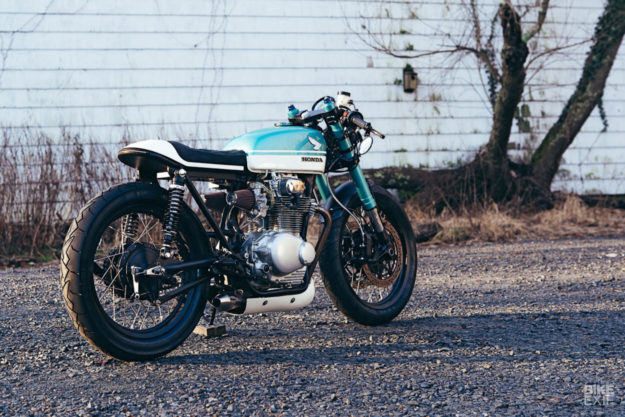
“He parked it in 1983, and it sat there until I purchased it for $100 and brought it back to life as a brat style/café-type bike. The bike took first place in five out of the six shows I entered it in.” Not surprisingly, word got around and business boomed.
Mark happened across this 1972 CB350 in a Texas barn last year, bought it for $600, and promptly broke it down to the frame. “I like to think of it as a more modern, upgraded version of a 1970s factory racing bike,” he says.
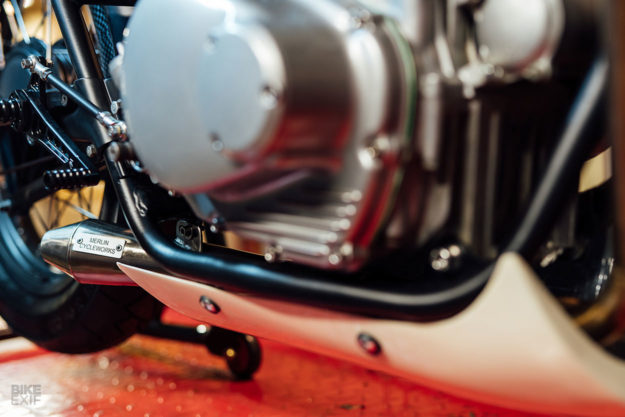
“The goal was increased power, better handling, and more reliability. I think we checked every box.”
There’s something reassuring about knowing an aircraft mechanic built a bike, and Mark has done an extremely thorough job. He’s detabbed the frame, heavily reinforced it, and even re-engineered the back half—eliminating the factory pressed steel frame.

Slotted into the upgraded frame is a comprehensively rebuilt engine—although it only had 7,000 miles on the clock. It’s now sporting Wiseco oversized 10.5:1 pistons, a custom-ground Megacycle race cam, and Kibblewhite ‘Black Diamond’ valves.
Helping to dial in the race cam was ex-factory racer Frank Giannini of Giannini Racing—a multiple USCRA class champion. Spark comes from a Charlie’s Place ignition, along with a Rick’s Hotshot high output rotor and stator. And there’s an Antigravity 8-cell battery hidden in the rear cowl.
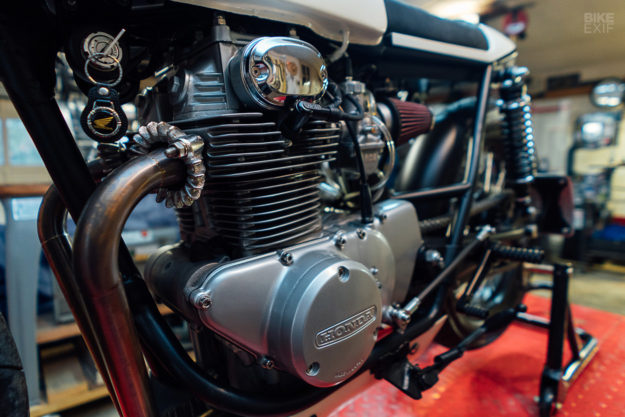
Mark’s had the engine cases powdercoated, along with most of the other mechanical parts. The tank, forks and fairings are painted in high-end BASF Glasurit paint, with ceramic coatings and XPEL protective film applied on top.
Mark made the exhaust himself, using back-purged TIG welded steel, and 1.25″ diameter tubing to maintain torque. It’s .060 wall 304 stainless, with a Cone Engineering muffler, and Mark also fabricated the inlets at the head on his lathe.
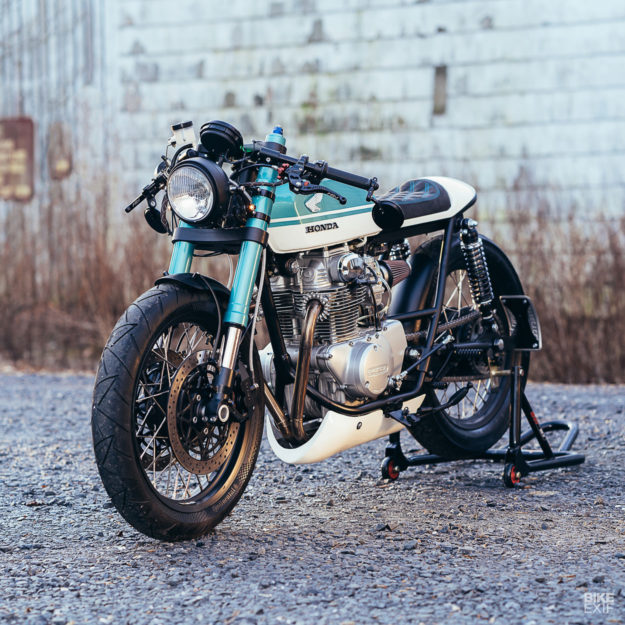
The chunky front end is a rebuilt 2005-spec Suzuki GSX-R750 fitment, held in place by custom triple trees from Cognito Moto, with high performance Gazi shocks bringing up the rear. (The color-coding on the forks is a nod to the Honda practice of painting the fork uppers the same color as the tank.)
To reduce unsprung weight, Mark has installed Excel Takasago aluminum rims, powdercoated black. They’re laced with Buchanan’s stainless steel spokes to rebuilt hubs—a Cognito Moto at the front and a Honda OEM at the rear. The rubber is a mix of Continental’s Road Attack and Classic Attack.
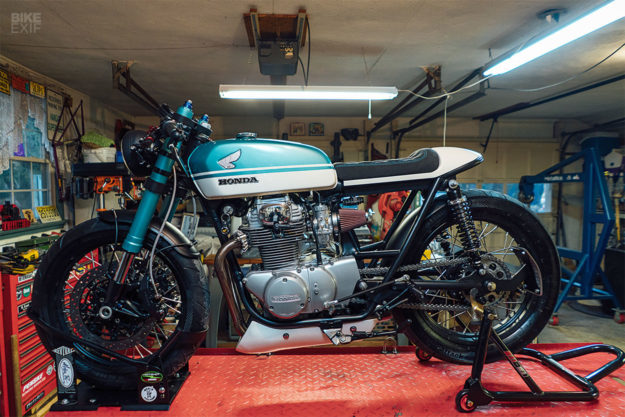
The brakes have been rebuilt and powdered, and hooked up to Brembo masters via braided steel lines.
The clip-on bars are Vortex, the levers are from ASV, there’s a Domino quick-action race throttle, and the classy billet switchgear is from our friends at Renard Speed Shop in Estonia. The instrument is a combined GPS speedo/tach from Speedhut.
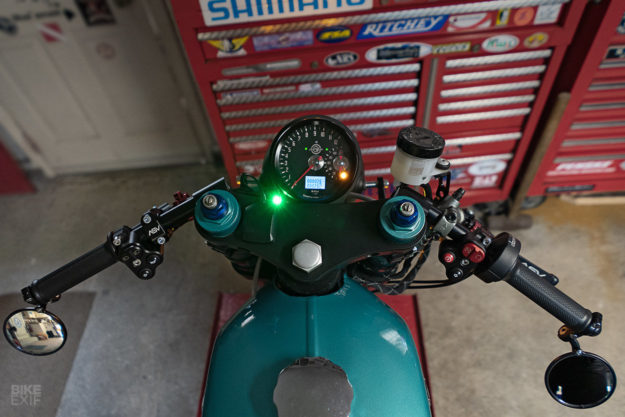
Everything’s hooked up via a new wiring loom, using aircraft-grade connectors—as you might expect, given Mark’s day job. It’s all routed into a Motogadget m.unit, which is hidden under the seat along with the starter solenoid and a central ground bus.
There’s a custom belly pan to shield the exhaust: Mark fabricated this in-house using .060 aluminum, teaching himself how to use an English wheel as he went along.
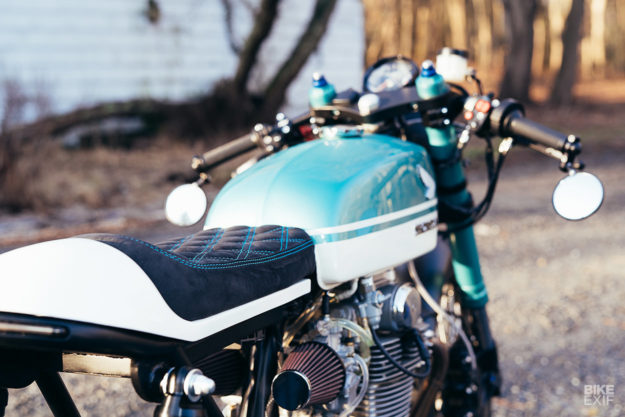
He also built and fabricated the seat unit, which is covered in Alcantara with stitching to match the blue in the gorgeous two-tone paint.
We’re spoilt for choice when it comes to custom Hondas, but this one goes straight into our all-time Top Ten CBs.
Love your work, Mark.
Merlin Cycleworks Instagram | Images by Charles Thorpe
